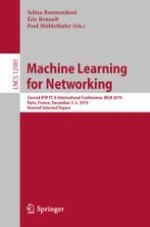2020 | OriginalPaper | Buchkapitel
A New Approach to Determine the Optimal Number of Clusters Based on the Gap Statistic
verfasst von : Jaekyung Yang, Jong-Yeong Lee, Myoungjin Choi, Yeongin Joo
Erschienen in: Machine Learning for Networking
Aktivieren Sie unsere intelligente Suche, um passende Fachinhalte oder Patente zu finden.
Wählen Sie Textabschnitte aus um mit Künstlicher Intelligenz passenden Patente zu finden. powered by
Markieren Sie Textabschnitte, um KI-gestützt weitere passende Inhalte zu finden. powered by
